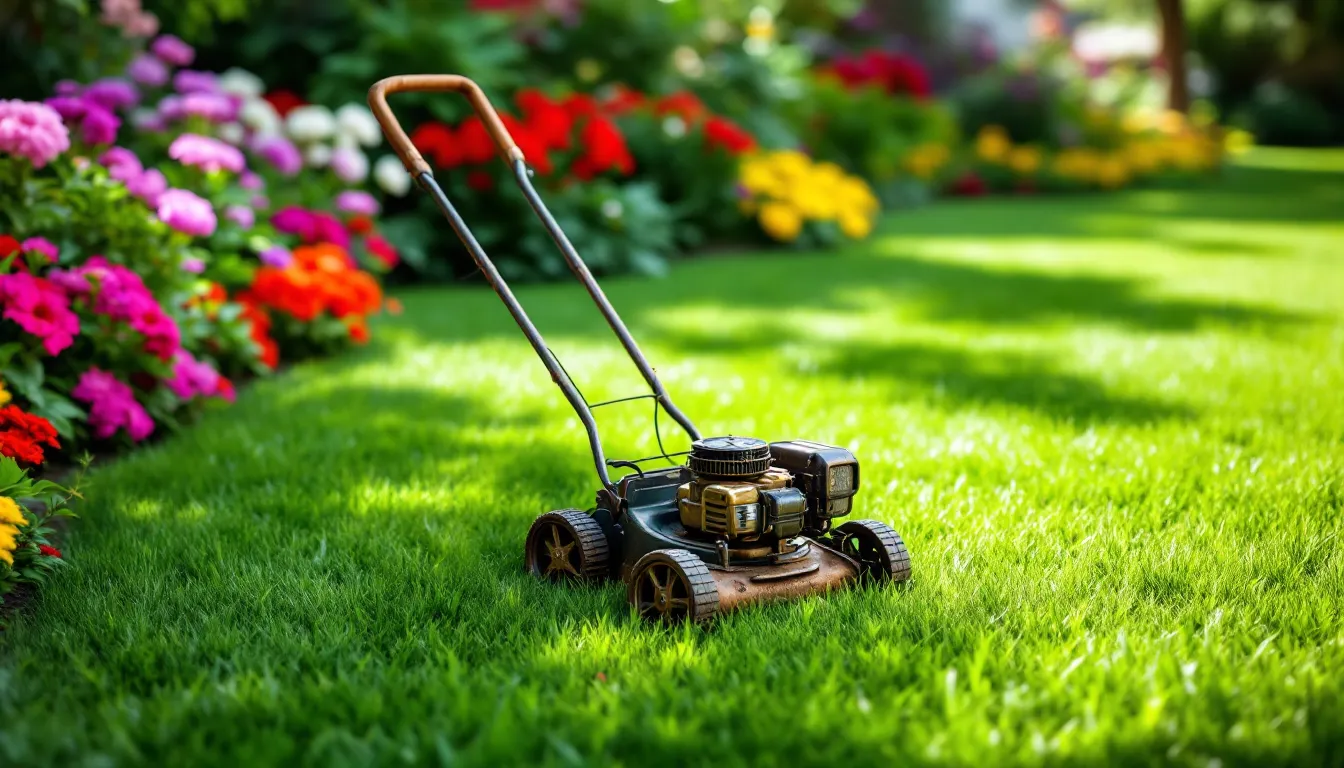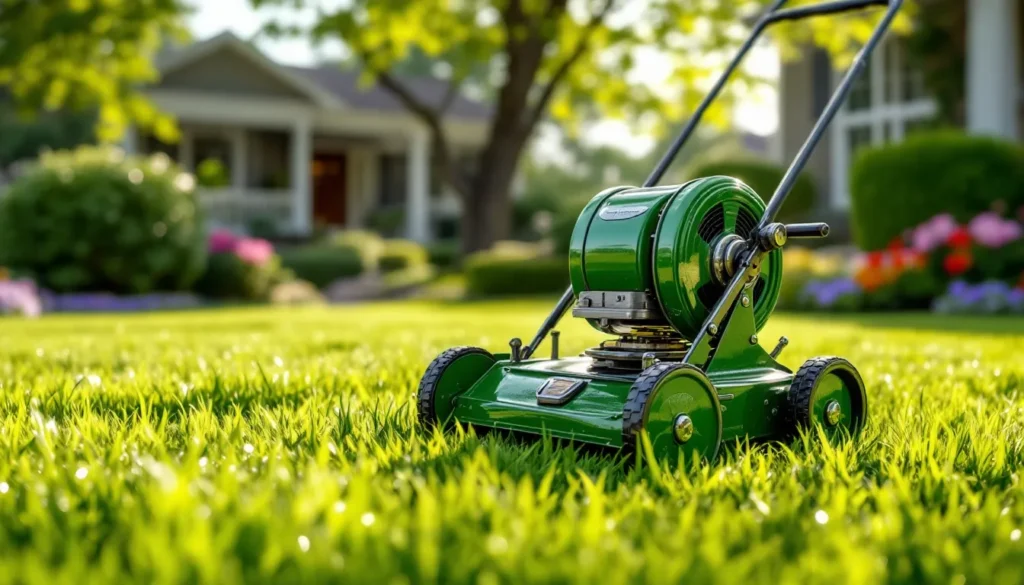Picture a sunny Saturday morning, the smell of fresh-cut grass wafting through the air. You might not realize it, but that neatly trimmed lawn owes its existence to an innovative invention: the lawn mower. This essential tool has transformed the way we maintain our yards and gardens, making it easier than ever to achieve a beautiful outdoor space.
But who came up with this ingenious device? The story of the lawn mower dates back to the 19th century when a British inventor sought to simplify the laborious task of lawn care. As you delve into the history of this remarkable invention, you’ll discover how it evolved over the years and the impact it’s had on gardening and landscaping. Get ready to explore the fascinating journey of the lawn mower and the mind behind its creation.
Overview of Lawn Mowers
Lawn mowers are essential tools for maintaining landscapes, providing efficient solutions for grass cutting and yard upkeep. The invention of the lawn mower during the 19th century laid the groundwork for modern gardening techniques.
You’ll find several types of lawn mowers available today, each designed for specific needs:
- Push Mowers: Powered by human effort, these mowers offer simplicity and control. They’re ideal for small yards.
- Self-Propelled Mowers: Equipped with a drive mechanism, these mowers provide ease of use on sloped or larger terrains.
- Riding Mowers: Suitable for expansive lawns, riding mowers allow you to cover large areas quickly while offering comfort and convenience.
- Robotic Mowers: These autonomous machines mow without direct human intervention, making lawn care more effortless and time-efficient.
You can notice significant advancements in mower technology, including engine efficiency and cutting precision. Various innovations enhance user experience and mower performance, reflecting the evolution from the manual hand-powered version invented by Edwin Beard Budding in 1830. This innovative machinery transformed garden aesthetics, making lush green spaces accessible for all homeowners.
Understanding the types and advancements of lawn mowers helps you select the best option for your lawn care needs.
History of Lawn Care

Lawn care has evolved significantly over the centuries, transitioning from manual methods to advanced machinery. Understanding this history reveals how lawn maintenance became easier and more efficient.
Early Methods of Lawn Maintenance
Early lawn maintenance relied on manual tools such as scythes and sickles. These tools required significant physical effort to cut grass and maintain gardens. Homeowners often enlisted animals to graze on lawns, providing a natural solution for grass management. In the 18th century, landscape designs emphasized manicured lawns, leading to a growing need for more efficient maintenance techniques.
The Need for Innovation
By the 19th century, the demand for simpler lawn care methods prompted innovations. The popularity of picturesque gardens spurred interest in grass cutting solutions. Edwin Beard Budding’s invention of the lawn mower in 1830 marked a pivotal moment, significantly reducing the labor involved in lawn maintenance. Advancements continued with the introduction of steam-powered and gasoline-powered mowers, catering to larger estates and commercial landscapes. These innovations transformed lawn care from a labor-intensive chore to a more manageable task for homeowners and landscapers.
The Invention of the Lawn Mower
The lawn mower changed lawn care forever. This revolutionary invention made maintaining neat, trimmed lawns simpler and more efficient.
The Inventor: Edwin Beard Budding
Edwin Beard Budding, a British engineer, invented the first lawn mower in 1830. Budding sought an effective method for cutting grass in sports fields and aristocratic gardens. His background in engineering led him to design a machine that utilized a simple reel and blade mechanism, leveraging the principles of a spinning cylinder. This invention quickly gained popularity, influencing the landscaping practices of the time and setting the foundation for future mower developments.
The Mechanism of the Original Mower
The original mower employed a cylindrical reel mechanism consisting of a rotating set of blades. The sharp, stationary bottom blade cut grass as the mower rolled forward. This design enabled a more uniform cutting height, providing a neat appearance. Budding’s mower featured a push design, requiring manual effort to propel it across the lawn. This innovative mechanism drastically reduced labor compared to traditional hand tools, paving the way for more advanced designs and machinery in the years that followed.
Evolution of Lawn Mowers
The lawn mower has evolved dramatically since its inception, reflecting changes in design, functionality, and the integration of advanced technologies. Each development has enhanced lawn care efficiency and user experience.
Advancements in Design and Functionality
Lawn mower design has transformed significantly over the decades. Early models featured the basic reel mechanism, which Budding pioneered. Modern push mowers now come with adjustable cutting heights, allowing users to customize their lawn length. Self-propelled mowers provide added convenience, reducing the physical effort required for larger lawns. Riding mowers, ideal for expansive areas, offer comfort and efficiency, often equipped with features like zero-turn capability for precise maneuverability. Robotic mowers have emerged as a game-changer, utilizing sensors and artificial intelligence to autonomously navigate and maintain your lawn, minimizing the time and effort needed for maintenance.
The Impact of Technology on Lawn Care
Technological advancements have revolutionized lawn care. Engine efficiency has improved, leading to more powerful yet environmentally friendly gas and electric mowers. Battery-powered mowers have gained popularity, offering quieter and lower-emission alternatives. Innovations like GPS tracking and mobile applications have made it easier to schedule and monitor lawn care tasks, allowing for optimized maintenance routines. Enhanced blade technology ensures cleaner cuts, promoting healthier grass growth. These modern tools make lawn care more accessible, efficient, and enjoyable, helping you achieve a beautifully manicured outdoor space with minimal effort.
Cultural Significance of Lawn Mowers
Lawn mowers hold significant cultural importance in various societies, shaping outdoor aesthetics and lifestyle choices. Their evolution reflects broader shifts in gardening practices and community values.
Lawn Care in Different Countries
Lawn care practices vary across countries, influenced by climate, culture, and landscape design preferences.
- United States: Homeowners prioritize lawn aesthetics, often maintaining lush green yards. The suburban lifestyle encourages well-kept lawns as a symbol of status.
- United Kingdom: Traditional gardens emphasize biodiversity with native plants alongside manicured grass areas. Lawns often host social events, enhancing community bonding.
- Japan: Zen gardens feature minimalistic lawns emphasizing simplicity and tranquility. Mowers cater to precision cutting, aligning with cultural values of harmony and balance.
- Australia: Drought-resistant lawns are popular, promoting sustainable practices. Innovations in lawn equipment support efficient water use and maintenance.
Influence on Suburban Living
Lawn mowers significantly influence suburban living by shaping community identity and standards of homeownership.
- Aesthetic Appeal: Beautifully manicured lawns create visually pleasing neighborhoods, contributing to property values and attracting potential buyers.
- Social Interaction: Lawns serve as communal spaces for family gatherings, encouraging outdoor activities and fostering neighborhood connections.
- Environmental Awareness: Efficient lawn care encourages sustainable practices like native planting and water conservation, reflecting a growing consciousness towards environmental stewardship.
- Leisure and Recreation: Well-kept lawns provide space for recreational activities, promoting a healthy lifestyle while enhancing overall well-being.
The lawn mower’s cultural significance extends beyond functionality, illustrating its role in shaping social norms and community life.
Conclusion
The lawn mower has come a long way since Edwin Beard Budding’s groundbreaking invention in 1830. Its evolution has not only transformed how you maintain your yard but also how you interact with your outdoor space. From push mowers to advanced robotic versions, these tools have made lawn care more efficient and accessible than ever.
As you explore the various types of mowers available today, you can appreciate the blend of technology and design that caters to your unique gardening needs. Understanding the significance of lawn mowers helps you make informed decisions for your lawn care routine and enhances the beauty of your outdoor environment. Embrace the advancements in this essential tool and enjoy the benefits of a well-manicured lawn.

Hi, I’m Md Rofiqul, a gardening enthusiast who loves spending time in the garden and backyard. I enjoy caring for plants, growing flowers and vegetables, and creating a green space that feels peaceful and refreshing. Gardening is more than just a hobby, it’s a passion that connects me to nature and brings joy to my daily life. Living with plants inspires me to embrace simplicity, patience, and sustainability while making every day more colorful and rewarding.
